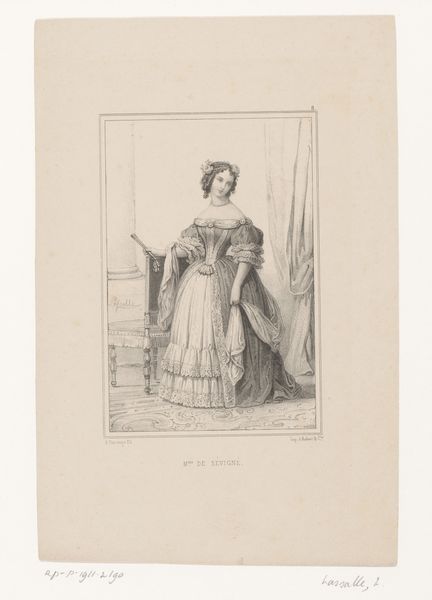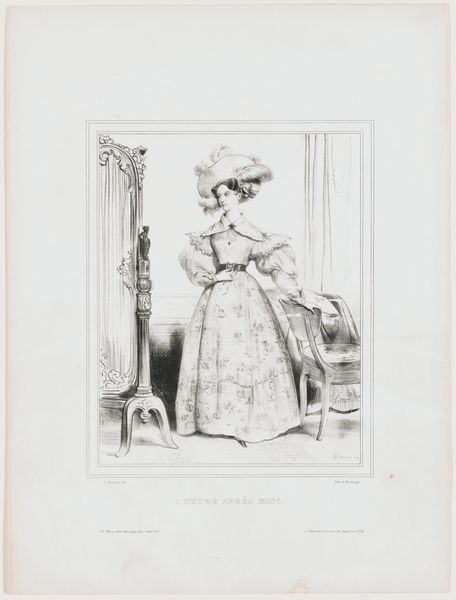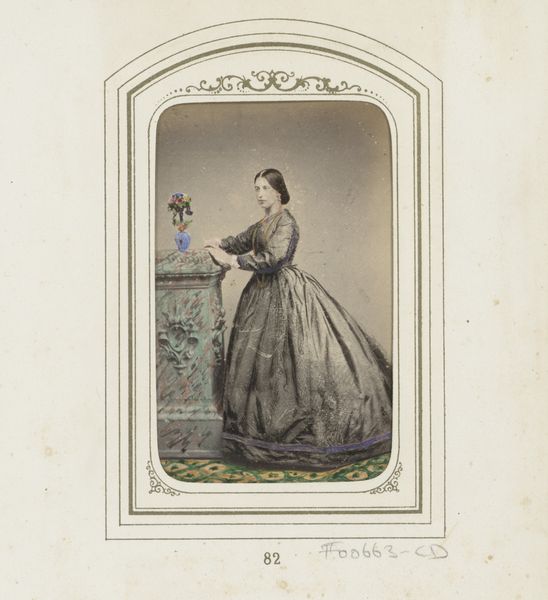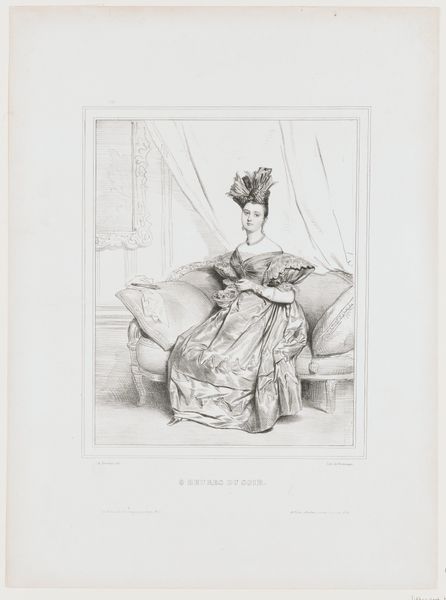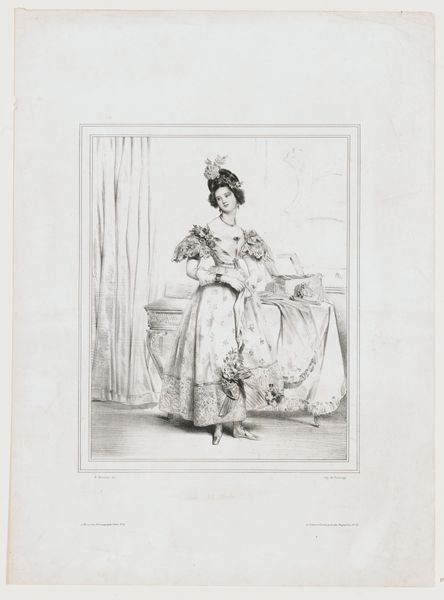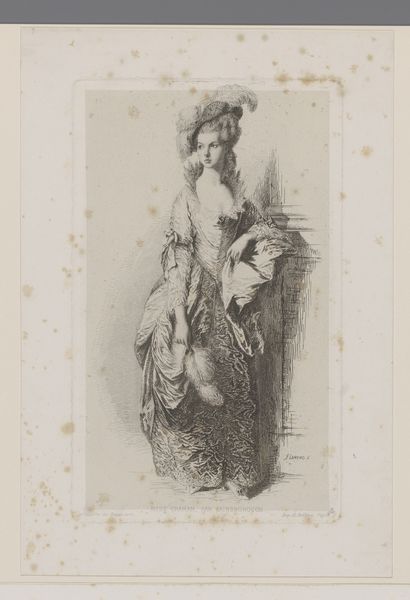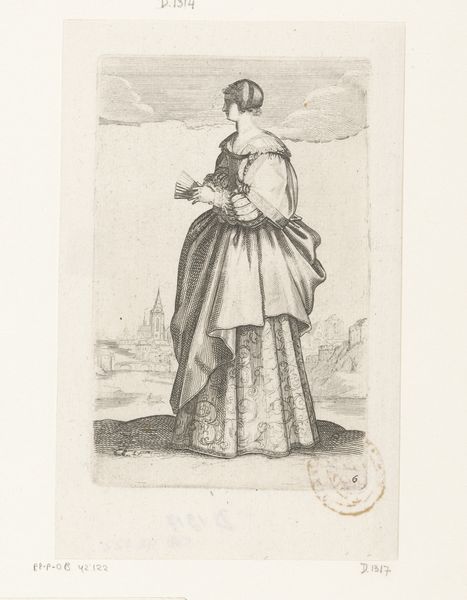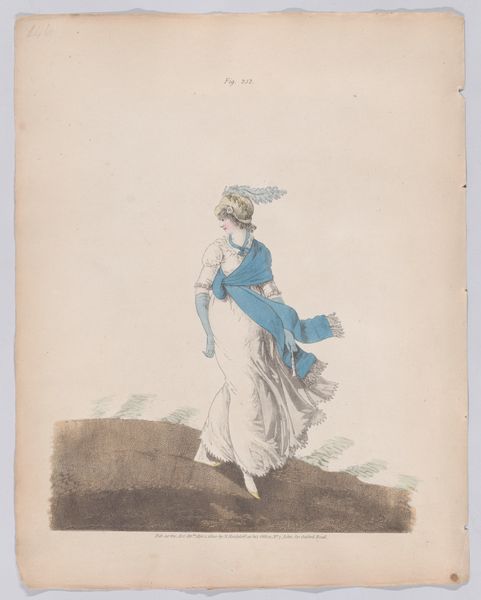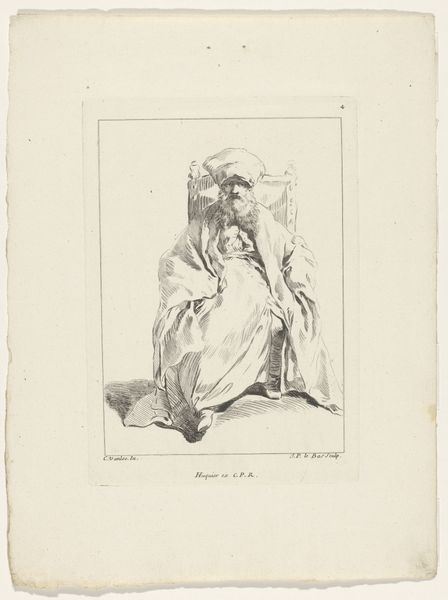
drawing, paper, pen
#
portrait
#
drawing
#
paper
#
pen
#
history-painting
#
academic-art
#
watercolor
Dimensions: height 281 mm, width 193 mm
Copyright: Rijks Museum: Open Domain
Editor: This drawing by Edouard Vermorcken, entitled "Portret van koningin Victoria," is from between 1830 and 1906, rendered in pen on paper, with what looks like watercolor highlights. The Queen looks rather pensive, almost melancholy. What stands out to you about it? Curator: This portrait, situated within the long reign of Victoria, prompts a vital question: how did representations like this shape and maintain power structures? Think about the ideal of the "Victorian woman" – pure, domestic, submissive. How does this image reinforce or challenge that construct? Consider her gaze; it meets ours, but what does it communicate? Strength? Vulnerability? And that red sash – what might it symbolize in terms of gendered power? Editor: I see your point about the gaze. It is rather direct. I'm not sure "submissive" comes to mind. Curator: Exactly! And there's a dialogue to be had between Vermorcken's artistic intentions, and the later reception of Victoria as this strong, imperial figurehead. This image, in its own time, contributes to the foundation of that icon. How does this feed into current debates about monarchy, legacy, and gender? Do such portraits solidify the monarchic structure? Editor: I hadn't considered the historical context. The image takes on new weight knowing that. Curator: It’s crucial to see art as active in the social sphere, always working, never neutral. By understanding the cultural background, we appreciate art as something woven into history.
Comments
No comments
Be the first to comment and join the conversation on the ultimate creative platform.
